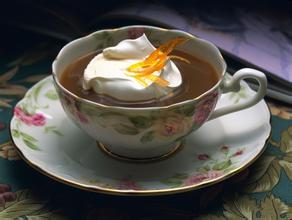Introduction of Ugandan washed coffee Robart coffee beans to the mountains of Elgon and Bu
A secondary taste associated with "sour taste". When coffee is inhaled into the mouth, the tip of the tongue feels sweet and tingling. When the coffee cools down, sweetness will become the main taste in the mouth. Because the proportion of acid is higher than the average level, and the sour taste is produced by sweetness, this taste occurs when mixed with stronger sugar. Kenyan coffee has this characteristic.
(18) Grade I coffee taste
Acidy, mellow, winey, bland, sharp and soury. The four basic flavors are produced by the interaction of different relative intensity, which is also the basis for the classification of coffee with similar taste.
(19) rough (rough)
Secondary flavor associated with "sharp". The front edge of the tongue will obviously feel torn and grinded. The additional qualities of salty taste produce this feeling.
(20) salt
It belongs to the basic flavor. It is characterized by chloride, bromide, iodide, nitrate and sulfate solution of potassium and lithium. It is mainly felt by the fungiform papillae on the front edge of the tongue.
(21) Grade II coffee taste
One of the four basic coffee flavors is produced when the first-class coffee flavor plays a leading role.
Sour-from spicy to spicy; glycol-from soft to fine; wine taste-from pungent to sour; light-from soft to neutral; sharp-from rough to dry; sour-from stiff to bitter; the temperature of coffee affects the feeling of these flavors.

Important Notice :
前街咖啡 FrontStreet Coffee has moved to new addredd:
FrontStreet Coffee Address: 315,Donghua East Road,GuangZhou
Tel:020 38364473
- Prev

Costa Rican coffee with full grains, ideal acidity and unique strong flavor
Costa Rican coffee is characterized by full granules, ideal acidity and unique strong aroma. Costa Rica's coffee industry, originally controlled by the Costa Rican Coffee Industry Company (InstitutodelCafdeCostaRica, ICAFE), has been taken over by the official Coffee Committee (OficinadelCaf). Among the coffee exported, those products that are considered to be of substandard quality
- Next

Introduction of Sidamo coffee beans with grayish acidity, soft and strong acidity and suitable mellow
Sidamo Coffee beans are grayish, thick in some places and small in others, with soft and strong acidity, mellow and sweet and spicy. It is one of the courtyard coffees in the highlands of southern Ethiopia. Unlike ordinary African coffee, Sidamo has clear acidity, smooth taste and delicate floral smell. The taste of Sidama in the sun is close to the smell of flowers, but slightly.
Related
- Guji coffee producing area of Guji, Ethiopia: Humbela, Shakiso, Wulaga
- What is the most expensive variety of Qiloso in BOP multi-variety group?
- How to store the coffee beans bought home?
- Why are Yemeni coffee beans so rare now?
- Ethiopian Sidamo all Red Fruit Sun Sun Santa Vini Coffee beans
- SOE is mostly sour? What does it mean? Is it a single bean? what's the difference between it and Italian blending?
- Is Italian coffee beans suitable for making hand-brewed coffee?
- How to choose coffee beans when making cold coffee? What kind of coffee beans are suitable for making cold coffee?
- Just entered the pit to make coffee, what kind of coffee beans should be chosen?
- Can only Japan buy real Blue Mountain Coffee? What are authentic Jamaican Blue Mountain coffee beans?

